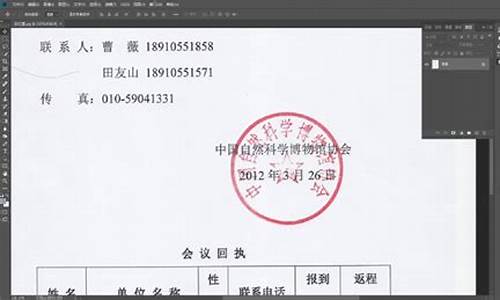三年级英语重点句子汇总_三年级英语的重点句型
1.三年级英语第七课课文怎么读
2.三年级十句英语句子
3.三年级下册英语作文万能句子
4.3.4年级英语课文中陈述句句子有那些?
5.小学三年级英语语法知识点3篇

1、向别人问好应该说――A: Hello! (你好!) B: Hi! (你好!)
2、问别人的名字应该说-――A:What’s your name? 你的名字是什么?
B:My name’s Chen Jie. 我的名字是陈洁。
3、跟别人分手应该说――A: Good bye!(再见) B: bye.(再见)
4、A: I he a pencil. 我有一只铅笔 B: Me too . 我也有。
5、早上相见应该说-――A: Good morning. 早上好!
B: Good morning! 早上好!
6、下午相见应该说――A: Good afternoon! 下午好!
三年级英语第七课课文怎么读
#三年级# 导语教育要使人愉快,要让一切的教育带有乐趣。 考 网为大家准备了小学三年级英语语法知识三篇,希望对大家有所帮助!
常错的句子
1、Let’s count the candles. 让我们一起数数蜡烛。OK. 好的。
2、You’re a good boy. 你是一个好男孩。
Thank you. / Thanks. 谢谢。
3、Who’s that boy? 那男孩是谁?
He’s my friend. 他是我的朋友。
4、Oh, it’s a banana. 噢,它是一个香蕉。
5、What’s this? 这是什么?
A pencil. 一只铅笔。
或: It’s a pencil. 它是一只铅笔。
6、What color is the banana? 这个苹果是什么颜色?
It’s yellow. 它是**。
常用句型
1.Hello 的用法:Hello 的意思为“您好” ,一般可作为熟人,亲朋好友之间的打招呼用语,语气比较随便,例如:
Hello,Li Hua!你好,李华。
Hello,Tom!你好,汤姆!
Hello 也可以用以引起某人注意,常用在打电话时或者在路上碰见熟人时,相当于中文中的“喂”,有时也可用Hi 来代替hello ,但前者显得更随便。
2.What's your name?的用法:
当两人初次见面互相询问姓名时,可用What's your name?来提问,回答时,可用My name is ….来回答,接着反问对方时,可用And what's your name?来提问。例如:
Hi!What's your name?
Hi!My name is Lucy.And what's your name?
My name is Wang Ying.
你好,你叫什么名字?
你好,我叫露西。你叫什么名字?
我叫王英。
句中的What's是What is的缩写形式。
3.Good morning,class (teacher).的用法:
Good morning,class.同学们好。
Good morning,teacher.老师好。
这是上午上课时,老师和全班同学互相问候时用语。Good morning 是上午问候时的用语,多用于熟人,朋友或家人之间,是比较正式的问候用语。句中问候语放在前面,称呼语则要放在后面,并用逗号隔开。例如:
Good morning.Mr.White.怀特先生,你好。
4.英语字母:
英语中有26个字母,每一字母有大写形式和小写形式两种。大小写形式如下:
A a B b C c D d E e F f G g H h I I
J j K k L l M m N n O o P p Q q R r
S s T t U u V v W w X x Y y Z z
1.Are you…?的用法。
这是一疑问句型,意思是“你是……吗?”用来询问姓名,职业,身份等,例如:
Are you a worker?你是一名工人吗?
Are you a student?你是学生吗?
回答时用Yes,I am.(是的,我是。)或者No,I'm not.(不,我不是)来回答,注意Yes和No后面都有逗号,不能省略。
2.Nice to meet you.的用法:
这是两位初次见面相识后的用语,意思是“见到你很高兴。”见面相识可由自我介绍,第三者介绍或者询问相识。例如:
Hello!I'm Xiao Hua.
Hello!I'm Xiao Li.
Nice to meet you,Xiao Li.
Nice to meet you,too,Xiao Hua.
你好,我是小华
你好,我是小李。
小李,见到你我很高兴。
小华,见到你我也很高兴。
3.Where is …?的用法:
这一句型表示“某物或某人在什么地方”。它同中文的句型结构不一样,where在前,而某物或某人在后,例如:
Where is my book?
我的书在哪儿?
It's there.
在这儿。
Where is Tom?
Tom在哪儿?
He is here.
他在这儿。
句中的where is可以缩写成“where's”。
4.am,is和are 的用法:
这三个词都是“是”的含义,但用法比中文中的“是”要复杂,英语中的am,is 和are都是be 的变化形式,根据不同的主语选用不同的动词,主语I 用am,表示复数的主语和单数“you”则要用are,其它则用is。
I am a teacher.我是教师。
You are a worker.你是一个工人。
You are students.你们是学生。
She is Miss Gao.她是高**。
This book is mine.这本书是我的。
与熟人打招呼:
英美人一天中见面都要打招呼,根据一天中不同的时间选用不同的说法,早上和上午时说Good morning,下午时说,Good afternoon,晚上见面时则要说Good evening。对方也用相同的问候语来回答。例如:
Good morning,Mr.Green.
Good morning,Miss Li.
Sorry 的用法:
Sorry 表示“对不起”或“抱歉”,用于对自己的过错,失误,不能做某事或者不能提供对方的请求时常用sorry或者I'm sorry来表示。例如:
Can you spell your name?你能拼一下你的名字吗?
I'm sorry.I can't.对不起,我不能。
What's the time,please?请问几点钟了?
Sorry,I don't know.对不起,我不知道。
Excuse me 的用法:
这是用于向某人询问一件事或提出请求而打扰某人时的用语。意思是“对不起”,“请问”。例如:
Excuse me!Where is my bag?对不起,我的包在哪儿呢?
Excuse me!Are you Teacher Wang?对不起,请问你是王老师吗?
What's …的用法:
这个句型用于询问某人叫什么或者某个东西是什么,例如:
What's this?It's a book.
这是什么?这是一本书。
What's your name?你叫什么名字?
My name is Lucy.我叫Lucy.
同义词、近义词等
一、同义词:
hi-hello bye ---goodbye yes --yeah nice---fine/ good
Thanks.---Thank you. a ---an
二、分写与缩写
I'm(分写)I am it's (分写) it is can't(分写) can not
let's(分写) let us he's(分写) he is she's(分写) she is
you're(分写) you are don't (分写)do not what's(分写) what is
who's (分写) who is name's (分写) name is that's (分写) that is
三、对应词
father---mother brother---sister he -she this(这) ---that (那)
his(他的) -her (她的) teacher---student boy ---girl
my(我的) -your(你的) I(我)---you(你) yes---no
四、近音词。
nice好的 you 你 zoo动物园 parent父母
nine 九 your 你的 juice 果汁 present礼物
fine好的 cook烹调 he他 can 能 blue 蓝色
five 五 look看 she 她 can't 不能 balloon 气球
book 书
duck 鸭子 soda 气水 What 什么 family 家庭
desk 书桌 salad色拉 watch手表 friend朋友
ice 雪 what 什么 she 她 is 是
rice 米饭 what's 是什么 she's 她是 isn't 不是
red 红色 an 一个(只…) it它
read 阅读 ant蚂蚁 is 是
bread 面包 and 和 it's它是
cat猫 ten十 lemon 柠檬
hat帽子 pen 钢笔 melon 甜瓜
五、同音词
he's他是---his他的 Oo----oh噢 Uu---you你
六、复数
1、直接加"s"
table-tables book-books cat---cats goat----goats
piano---pianos TV---TVs egg-eggs hat-hats
2、辅音+ y 结尾,把y 改ies
baby---babies family-families
3、特殊变化
ox-oxen
七、同义词
paint ( 涂油漆)---draw (绘画)
八、is、 am、are 的用法
I 用am, You 用are, is 用于he, she, it和单数,名词复数全用are, are, are,要想提问be 题前,否定not在be后面 。
三年级十句英语句子
三年级英语第七课课文需要掌握的单词和句子如下:
1.(颜色):red红色(的)、green绿色(的)、yellow**(的)、blue蓝色(的)、black黑色(的)、brown棕色(的)、white白色(的)、orange橙色(的)。
2.OK好,行、Mum妈妈(英式)Mom(美式)。
3.祈使句:Stand up站起来。Sit down坐下。Turn around转圈。Touch the ground碰下地面。
Unit Three:Look at me!看我。
4.句型:问候其他人。
Wu Yifan:Good morning.How are you?(早上好,你好吗?)。
Chen Jie:Good morning.I’m fine,thank you.(早上好。我挺好的,谢谢你。)。
5.祈使句:Close your eyes闭上你的眼睛。Open your mouth张开你的嘴巴。
Touch your nose/ear/face/head碰一下你的鼻子/耳朵/脸/头Clap your hands拍下你的手。
We your arms挥一下你的手。
Shake your legs/body摇摇你的腿/身体。
Stamp your foot跺一下你的脚。
学习英语的建议是:
1、建立学习:制定一个学习,包括每天要完成的任务和学习内容。这有助于保持学习的动力和方向。
2、创造良好的学习环境:选择一个安静、整洁、有良好光线和通风的地方学习。这有助于提高学习效率。
3、多听多说多练习:学习英语要多听、多说、多练习。可以听英语**、电视剧、新闻等,模仿母语者的发音、语调、口音等,与外教、母语者等进行对话练习,参加英语角、英语沙龙等活动。
4、注重语法和词汇:学习英语,语法和词汇是非常重要的基础。要注重语法规则的掌握和词汇量的积累。可以通过做练习题、阅读英文文章等方式来巩固和提高自己的语法和词汇水平。
5、培养英语思维:学习英语要尽量养成用英语思维的习惯,尽可能多地使用英语来思考问题、表达观点。这需要长期的积累和实践。
6、持之以恒:学习英语需要长期的坚持和耐心,不要轻易放弃。只有不断地学习和练习,才能掌握好这门语言。
三年级下册英语作文万能句子
How are you?你怎么样I 'm fine,thank you.我很好,谢谢。
Do you like football?你喜欢足球吗? Yes, I do.是的,我喜欢。
Hi,I'm LiuTao.嗨,我是刘涛 Hi,I'm Did嗨,我叫大卫。
What's your name?你的名字是什么?
Hi,I'm Nancy.嗨,我叫南希
Nice to meet you.很高兴认识你。
Get up ,××. XX,起床啦。 All right .好的
Go to school now ,××. XX,去上学啦 OK .好的
Go home now,××. xx,现在去家吧 All right ,See you ,Miss ××.好的,再见,李老师。
Go to bed now . 现在去睡觉 OK ,Good night .好的,晚安
3.4年级英语课文中陈述句句子有那些?
一.开头句型
1.As far as ...is concerned 就……而言 比如说:就我而言 As far as I concerned 2 It can be said with certainty that... +从句 可以肯定地说......
3.As the proverb says, 正如谚语所说的, 可以用来引用名言名句
4 .It has to be noticed that... 它必须注意到,...
5 .Its generally recognized that... 它普遍认为...
6 .Its likely that ... 这可能是因为...
7 .Its hardly that... 这是很难的......
8 Theres no denying the fact that...毫无疑问,无可否认
9 .Nothing is more important than the fact that... 没有什么比这更重要的是…
10 .whats far more important is that... 更重要的是…
二.衔接句型
1.A case in point is ... 一个典型的例子是...
3 But the problem is not so simple. Therefore,+句子 ( 然而问题并非如此简单,所以……) 4 .But its a pity that... 但遗憾的是… it’s a pity that….遗憾的是。。。
5 In spite of the fact that...尽管事实...... In spite of 尽管
6 .Further, we hold opinion that... 此外,我们坚持认为,...
7 .However , the difficulty lies in..+名词或者动名词 .然而,困难在于…
8.Similarly, we should pay attention to... 同样,我们要注意...
9 As it has been mentioned above...正如上面所提到的… (可以用来对前面所说的话进行补充说明)
10.In this respect, 从这个角度上
11.However, 然而…
三.结尾句型
1.I will conclude by saying... 最后我要说…
2.Therefore, we he the reason to believe that...因此,我们有理由相信…
3.All things considered,总而言之 = In a word=In conclusion
It may be safely said that...它可以有把握地说......
4.Therefore, in my opinion,因此,在我看来,
5.From what has been discussed above, we may safely draw the conclusion that….通过以上讨论,我们可以得出结论…
6.The data/statistics/figures lead us to the conclusion that….通过数据我们得到的结论是,....
7.It can be concluded from the discussion that...从中我们可以得出这样的结论
8.From my point of view, it would be better if...在我看来,如果……也许更好
四.举例句型
1. Here is one more example这里有不止一个的例子
2.Take … for example.就拿……为例子
五.常用于引言段的句型
1. Some people think that …. 有些人认为…
To be frank, I can not agree with their opinion for the reasons below. 坦率地说,我不能同意他们的意见,理由如下。
2. I believe the title statement is valid because…. 我认为这个论点是正确的,因为… 1
3. I cannot entirely agree with the idea that ….我无法完全同意….这一观点的说法…
4. Along with the development of…, more and more….随着……的发展,越来越多…
5 It is commonly/generally/widely/ believed /held/accepted/recognized that….它通常是认为…
6. As far as I am concerned, I completely agree with the former/ the latter.就我而言,我完全同意前者/后者的观点。
六 表示比较和对比的常用句型和表达法
1. A is completely different from B. (A和B完全不同)
2 The difference between A and B is lies in +名词或者动名词 ( A和B不同的地方是。。。) .
七 演绎法常用的句型
1. There are several reasons for…, but in general, they come down to three major ones.有几个原因……,但一般,他们可以归结为三个主要的。
2. Many ways can contribute to solving this problem, but the following ones may be most effective.有很多方法可以解决这个问题,但下面的可能是最有效的。 ( 可以用在保护环境等话题的作文)
4. Generally, the advantages can be listed as follows.一般来说,这些优势可以列举如下。
5. The reasons are as follows. 。。。的理由如下 (可以用来列举理由原因)
八 因果推理法常用句型
1.Because/Since we read the book, we he learned a lot. 由于阅读这本书,我们已经学到了很多。
2. If we read the book, we would learn a lot. 由于阅读这本书,我们已经学到了很多。
3. We read the book; as a result / therefore / thus / hence / consequently / for this reason / because of this, weve learned a lot. 由于阅读这本书,我们已经学到了很多。
4. As a result of /Because of/Due to/Owing to reading the book, weve learned a lot. 由于阅读这本书,我们已经学到了很多。
更多内容推荐
1.英语六级作文万能模板句子
2.英语四级作文结尾万能句型
3.中考英语万能金句精选
4.英语六级作文万能模板
5.高考英语必备万能句型
6.英语四级作文万能模板
7.高考英语作文万能金句
8.中考英语作文万能句型
9.高考英语作文万能模板
10.四级作文万能模板完整版
韩芳沫
回复 2 楼 2014-12-19
(一)段首句
1. 关于……人们有不同的观点。一些人认为…… There are different opinions among people as to ____ .Some people suggest that ____.
2. 俗话说(常言道)……,它是我们前辈的经历,但是,即使在今天,它在许多场合仍然适用。 There is an old saying______. It’s the experience of our forefathers,however,it is correct in many cases even today.
3. 现在,……,它们给我们的日常生活带来了许多危害。首先,……;其次,……。更为糟糕的是……。 Today, ____, which he brought a lot of harms in our daily life. First, ____ Second,____. What makes things worse is that______.
4. 现在,……很普遍,许多人喜欢……,因为……,另外(而且)……。 Nowadays,it is common to ______. Many people like ______ because ______. Besides,______.
5. 任何事物都是有两面性,……也不例外。它既有有利的一面,也有不利的一面。 Everything has two sides and ______ is not an exception,it has both advantages and disadvantages.
6. 关于……人们的观点各不相同,一些人认为(说)……,在他们看来,…… People’s opinions about ______ vary from person to person. Some people say that ______.To them,_____.
7. 人类正面临着一个严重的问题……,这个问题变得越来越严重。 Man is now facing a big problem ______ which is becoming more and more serious.
8. ……已成为人的关注的热门话题,特别是在年青人当中,将引发激烈的辩论。 ______ has become a hot topic among people,especially among the young and heated debates are right on their way.
9. ……在我们的日常生活中起着越来越重要的作用,它给我们带来了许多好处,但同时也引发一些严重的问题。 ______ has been playing an increasingly important role in our day-to-day life. it has brought us a lot of benefits but has created some serious problems as well.
10. 根据图表/数字/统计数字/表格中的百分比/图表/条形图/成形图可以看出……。很显然……,但是为什么呢? According to the figure/number/statistics/percentages in the /chart/bar graph/line/graph,it can be seen that______ while. Obviously,______,but why?
(二)中间段落句
1. 相反,有一些人赞成……,他们相信……,而且,他们认为……。 On the contrary,there are some people in for of ___.At the same time,they say____.
2. 但是,我认为这不是解决……的好方法,比如……。最糟糕的是……。 But I don’t think it is a very good way to solve ____.For example,____.Worst of all,___.
3. ……对我们国家的发展和建设是必不可少的,(也是)非常重要的。首先,……。而且……,最重要的是…… ______is necessary and important to our country’s development and construction. First,______.What’s more, _____.Most important of all,______.
4. 有几个可供我们纳的方法。首先,我们可以……。 There are several measures for us to adopt. First, we can______
5. 面临……,我们应该取一系列行之有效的方法来……。一方面……,另一方面, Confronted with______,we should take a series of effective measures to______. For one thing,______For another,______
6. 早就应该拿出行动了。比如说……,另外……。所有这些方法肯定会……。 It is high time that something was done about it. For example. _____.In addition. _____.All these measures will certainly______.
7. 为什么……?第一个原因是……;第二个原因是……;第三个原因是……。总的来说,……的主要原因是由于…… Why______? The first reason is that ______.The second reason is ______.The third is ______.For all this, the main cause of ______due to ______.
8. 然而,正如任何事物都有好坏两个方面一样,……也有它的不利的一面,象……。 However, just like everything has both its good and bad sides, ______also has its own disadvantages, such as ______.
9. 尽管如此,我相信……更有利。 Nonetheless, I believe that ______is more advantageous.
10. 完全同意……这种观点(陈述),主要理由如下: I fully agree with the statement that ______ because______.
(三)结尾句
1. 至于我,在某种程度上我同意后面的观点,我认为…… As far as I am concerned, I agree with the latter opinion to some extent. I think that ____.
2. 总而言之,整个社会应该密切关注……这个问题。只有这样,我们才能在将来……。 In a word, the whole society should pay close attention to the problem of ______.Only in this way can ______in the future.
3. 但是,……和……都有它们各自的优势(好处)。例如,……,而……。然而,把这两者相比较,我更倾向于(喜欢)…… But ______and ______he their own advantages. For example, _____, while_____. Comparing this with that, however, I prefer to______.
4. 就我个人而言,我相信……,因此,我坚信美好的未来正等着我们。因为…… Personally,
I believe that_____. Consequently, I’m confident that a bright future is awaiting us because______.
5. 随着社会的发展,……。因此,迫切需要……。如果每个人都愿为社会贡献自已的一份力量,这个社会将要变得越来越好。 With the development of society, ______.So it’s urgent and necessary to ____.If every member is willing to contribute himself to the society, it will be better and better.
6. 至于我(对我来说,就我而言),我认为……更合理。只有这样,我们才能…… For my part, I think it reasonable to_____. Only in this way can you _____.
7. 对我来说,我认为有必要……。原因如下:第一,……; 第二,……;最后……但同样重要的是…… In my opinion, I think it necessary to____. The reasons are as follows. First _____.Second ______. Last but not least,______.
8. 在总体上很难说……是好还是坏,因为它在很大程度上取决于……的形势。然而,就我个人而言,我发现……。 It is difficult to say whether _____is good or not in general as it depends very much on the situation of______. However, from a personal point of view find______.
9. 综上所述,我们可以清楚地得出结论…… From what has been discussed above, we may reasonably arrive at the conclusion that____.
小学三年级英语语法知识点3篇
现在的教材有不同版本,我有北师大版的3-4年级句型,都给你吧!你挑挑陈述句!
三年级 (上)
1)禁止做某事
Don’t do sth. No smoking . No food.2)询问价格
How much is it? How much are they?3)询问物主(强调名词所有格’s的使用)
Whose computer is it? It’s Mocky’s. Whose CDs are these? They’re Ken’s. Are these…? Is that…?4)现在正在进行时
What…doing? I am doing … He\she is doing….5)询问物主(突出形容词性物主代词的使用)
Are these our\ your\ their books? Yes, they are. No, they aren’t.三年级 (下)
1)询问某人喜欢…吗? 第三人称单数
Do you like…? Yes, I do. No, I don’t. Does Mockey like…? No, he doesn’t. He likes…. What do you like?2)简单形容词的用法, 对比
Is he a tall boy? Yes he is. Is she a short girl? No, she isn’t. He’s short. She’s thin. It’s a fat bear. It’s a thin fish.3)祈使句的使用
He some orange juice.\fruit.
4)简单的购物用语. 某人有什么及问句
I want…. I\ We he a T-shirt. She\ He has a blue cap. Do you he…? Yes, I do. No, I don’t. Can I he…?5)询问某人哪里不舒服及答语
How are you today? I’m not well. What’s the matter? My head hurts.四年级 (上)
1)职业
What does he/she do? Is he/she a nurse?Are you a nurse?2)了解他人
Do you know her/him? Does he/she know you/me?3)购物
Do you he any jeans? What size do you want? The shoes are too expensive/big/small?4)位置
Where is the box? It’s between /on /in/under ….
5)问路
Excuse me. Where’s the school? It’s near the park.四年级 (下)
1) 一般现在时
What do you/they/he/she do on Monday?
I/We/They/He/She go/goes to school.
What are you /they going to do?
I am (We are ,They are) going to eat dinner.
2)询问时间
What time is it? It’s one o’clock.
It’s time four school. It’s time to visit ….
When do you get up?
I/We always get up at 7:00in the morning.
When does he/she get up?
He /She often gets up at7o’clock.
3)建议
Let’s play football. Shall we go to a movie?4)询问未来的打算
What are you /they going to do?
I am going to… They are going to…
What is she/he going to do ?
He/She is going to play football.
#小学英语# 导语英语语法是针对英语语言进行研究后,系统地总结归纳出来的一系列语言规则。英语语法的精髓在于掌握语言的使用。以下是 无 整理的《小学三年级英语语法知识点3篇》相关资料,希望帮助到您。
篇一小学三年级英语语法知识点
一、否定句:表示某一否定意思。句中一定有not。
有三种可能:be动词(am、is、are、was、were)+not、情态动词(can、must、should)+ not、助动词(do、does、did) + not
如何将一个肯定的陈述句改为否定句:
1、看句中有无be动词,如有,直接在be动词后+ not。
2、看句中有无情态动词,如有,直接在情态动词后+ not。
3、如上述二者都没有,就应用助动词+ not。分四个步骤:
(1)肯定陈述句中本来是没有助动词的,要加上去,位置在主语(某人或某物)后,动词前。
(2)确定助动词用do、does还是did,根据句中动词,动词是原形的助动词就用do,动词是第三人称单数的助动词就用does,动词用过去式的助动词就有did。
(3)在助动词后加not。
(4)原句中动词如发生变化就要恢复成原形。
强调一点,有some的要考虑是否要用any。
二、一般疑问句。
表示疑问,一般回答只有两种可能Yes,……或No,……句中没有疑问词。
如何将一个肯定的陈述句改为否定句:
1、看句中有无be动词,如有,把be动词提到句首即可。
2、看句中有无情态动词,如有,把情态动词提到句首即可。
3、如上述二者都没有,就应把助动提到句首。分四个步骤:
(1)肯定陈述句中本来是没有助动词的,要加上去,位置在主语(某人或某物)后,动词前。
(2)确定助动词用do、does还是did,根据句中动词,动词是原形的助动词就用do,动词是第三人称单数的助动词就用does,动词用过去式的助动词就有did。
(3)把助动词后提到句首。
(4)原句中动词如发生变化就要恢复成原形。
强调一点,有some的要考虑是否要用any。
三、特殊疑问句。
表示疑问,有疑问词(在开头),回答有很多种可能。
常用疑问词:
What、When、Which、Who、Whose、Why、How
如何对划线部分提问:
1、将原问句翻译为汉语(在读中要将划线部分重读)。
如:His birthday is on the 5th of May .
他的生日在五月五日。
2、用汉语进行提问。
如上句,应该问:他的生日在什么时候?
3、根据汉语将所要提问的句子补充完整。
如上句When is his birthday ?
四、祈使句
表示请求或命令别人做某事或不要做某事。
肯定祈使句一定是以动词原形开头(有时有please),否定的祈使句一定是don’t加动词原形开头(有时有please)。
把祈使句改为否定句只需在动词前加don’t即可。
篇二小学三年级英语语法知识点
1. 名词单复数:英语中名词分可数与不可数名词:
①能用数目来计算的叫可数名词,有单、复数两种形式,复数形式多数是在词尾加“s”如:pens, books;
②不可数名词是无法用数目来计算的名词,如:milk, juice.
2.用情态动词can的用法
①“can’t”是“cannot”的缩写。
She can’t sing. He can’t dance.
② can 等情态动词后,用动词原形
She can dance.
He can swim.
篇三小学三年级英语语法知识点
情态动词cancan 在英语中有一个特殊的名字,叫做情态动词,表示“能够”, “会”, “能力”后面要跟着表示动作的动词。没有时态和人称的变化。表示不能做什么的时候,后面加上 not为can not,或者缩写为can’t。问别人“能…吗?”要把can 放在句子前面,首字母要大写,句尾别忘加上问号。
例句:
—I can swing.I can draw. —She can jump.He can play .
—We can touch .They can run. —I can’t sing.You can’t see.
—She can’t dance.He can’t hear a car. —We can’t hear an aeroplane.
—Can you hear a dog?Can he hear a bus? —Can Lucy write?Can you do it?
声明:本站所有文章资源内容,如无特殊说明或标注,均为采集网络资源。如若本站内容侵犯了原著者的合法权益,可联系本站删除。












